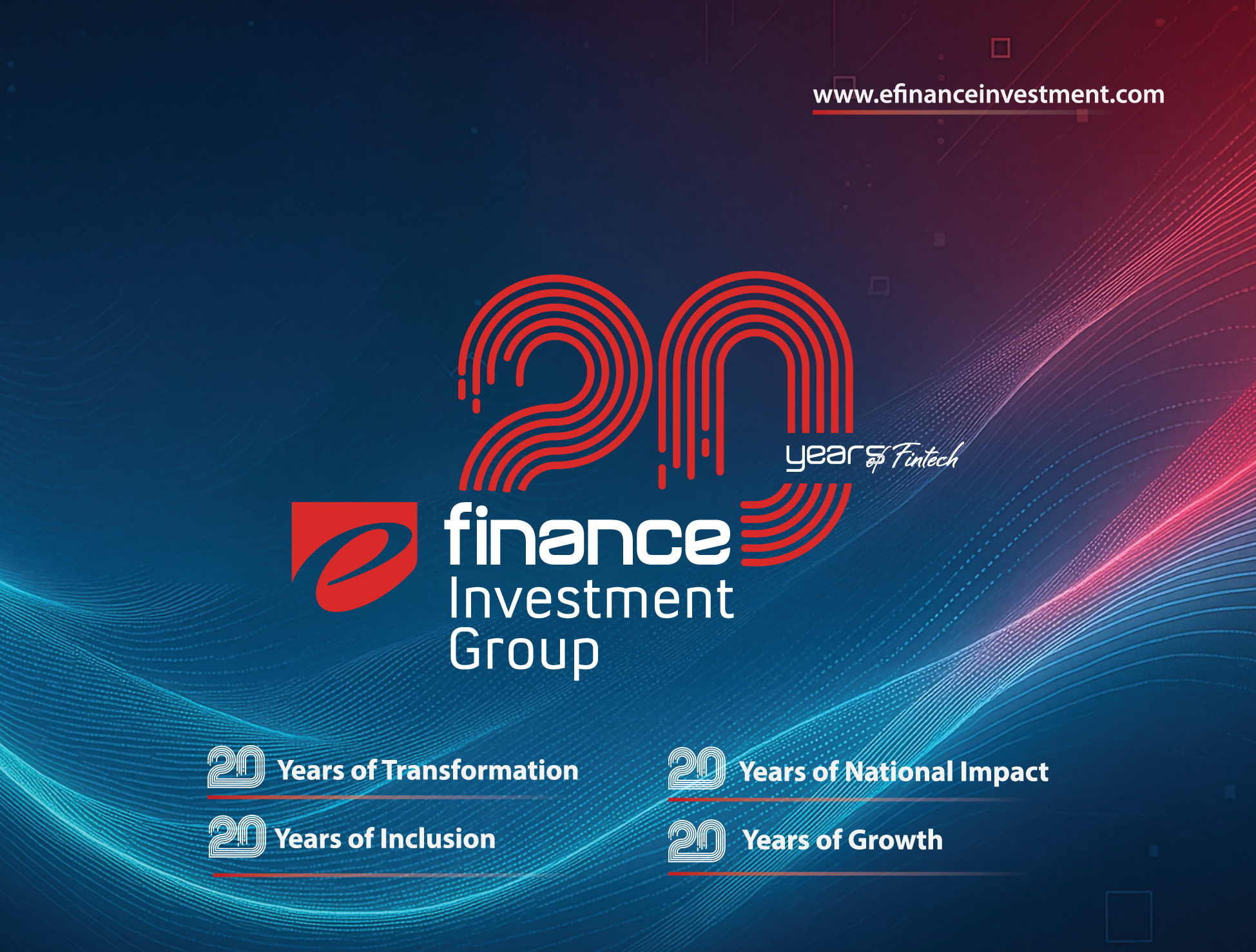لا زلنا بالعام ٢٠٢٣ إلا أن حال كونه
“لن أبرح حتى أبلغ” فبعد تجديدات يناير ، إبريل و يوليه ٢٠٢٣ حددت ملامح تجديدات ٢٠٢٤ و التى وضح جليا إستمرار ال Hard Market و تغيير ال Reinsurance Business Models
تأتي الفيضانات غير المسبوقة في ليبيا في أعقاب زلزال قوي بقوة 6.8 درجة ضرب المغرب، وتسبب في مقتل ما يقرب من 3000 شخص وإصابة 5500 آخرين جنوب مراكش في جبال الأطلس، مع نزوح مئات الآلاف الآخرين. وكان هذا الزلزال هو الأسوأ في شمال أفريقيا في نصف القرن الماضي.
وتتمثل الآثار المباشرة للكارثتين في الوفيات والإصابات والكسور والصدمات والجروح وصدمات الصحة العقلية. ومع ذلك، من المحتمل أن يكون التأثير على المدى الطويل أسوأ، حيث سيحرم المرضى الذين يعانون من الأمراض غير المعدية والأطفال والنساء الحوامل من الوصول إلى الرعاية الصحية والأدوية، ويعطل سلاسل التوريد، ويعطل نظام الرعاية الصحية المتوتر بالفعل.
ومع ذلك، فإن سلسلة من الكوارث واسعة النطاق يمكن أن تؤدي إلى إجهاد سوق إعادة التأمين وربما تؤثر على الصحة المالية العامة لصناعة التأمين.
الكوارث الطبيعية هي قوى طبيعة هائلة لا يمكن التنبؤ بها ويمكن أن تلحق الدمار بالمجتمعات والاقتصادات والبنية التحتية. من الأعاصير والزلازل إلى الفيضانات وحرائق الغابات، يمكن أن تؤدي هذه الأحداث إلى أضرار وخسائر واسعة النطاق. وفي حين تتميز الفترة التي تعقب أي كارثة طبيعية مباشرة بالجهود الإنسانية واستعادة الحياة الطبيعية، فإن هناك جانبا آخر بالغ الأهمية يلعب دورا: ألا وهو التأمين. تلعب صناعة التأمين دورًا محوريًا في مساعدة الأفراد والشركات والحكومات على التعافي من العبء المالي للكوارث الطبيعية. ومع ذلك، فإن تزايد وتيرة وشدة هذه الأحداث قد شكل تحديات كبيرة لقطاع التأمين و إعادة التأمين مما أعاد تشكيل مشهد تقييم المخاطر والتسعير والتغطيات.
الكاميرا تدور الآن لاستعراض ما سجله العام ٢٠٢٣ لسوق إعادة تأمين الممتلكات Property Reinsurance و التحديات و الفرص و الرؤية لعام ٢٠٢٣ حيث يبدو فى الأفق اننا سوف نستمر فى ال Hard Market لسنوات ٢٠٢٤ و ما يليها و هو بالطبع حدث سار لمعيدي التأمين.
We are keeping our ears to the ground for the current Property Reinsurance stats, insights and critical issues We all need to have knowledge about ….
THE CURRENT STATE OF PROPERTY REINSURANCE CAPACITY
Reinsurance capacity refers to the largest amount of reinsurance available from the general market. By purchasing reinsurance, If is able to spread out the risk across multiple companies and reduce the potential financial impact of very large individual claims or of many claims arising from its clients at the same time, for example following a flood. Reinsurers select the risks they want in their books and therefore they have a critical role to play in deciding what can be insured and at what price.
REINSURANCE MARKET CONTINUES TO RECALIBRATE AT MID-YEAR 2023 RENEWAL.
The broader market trends seen at January 1 continued at mid-year renewals, but with improved timing and concurrence around terms and conditions. While property pricing saw continued risk-adjusted rate increases in many segments, the average change moderated from January 1 .
■Additional capacity and increased appetite entered the property market at mid-year. However, the increased capacity remained highly disciplined around attachment points, pricing and coverage. The casualty market continues to trend in a cautious direction. Reinsurers are closely monitoring prior-year loss development as well as the moderating underlying rate environment.
KEY DEVELOPMENTS:
■Property – A strong demand for limit persists, but market corrections have rebalanced the supply/demand disparity faced by many regions a year ago.
■Global property catastrophe reinsurance risk-adjusted rate increases ranged from +10% to +50%, with loss-impacted clients often seeing higher pricing.
■Casualty – Reinsurance pricing pressure continued across most casualty lines driven by continued prior-year loss development, effects of social and economic inflation, moderating underlying rate changes (in some cases, decreases) and an increase in reinsurer margin requirements.
■Cyber – Quota share remains the prevalent reinsurance structure, often purchased in conjunction with aggregate coverage. Aggregate capacity, pricing and terms remained stable at mid-year.
■Retrocession – Mid-year renewals saw a continuation of price and coverage trends experienced earlier in the year, with post January 1 oversight leading to a more orderly renewal process and a narrower range of quotes and firm order terms. Capacity was less scarce mid-year, predominantly due to modest reduction in demand stemming from retro pricing dynamics and favorable terms on inwards portfolios.
REINSURANCE PROPERTY CATASTROPHE MARKET
- On the way to a new capacity demand and supply equilibrium but there’s still a long way to go the past year and half have seen major changes in the global Reinsurance Property Catastrophe (CAT) market.
By Exploring the state of the Reinsurance Property CAT market and found that:
- Insured losses exceeding USD 100bn p.a. globally are likely here to stay, and will grow further fuelled by economic value growth, urbanization, and climate change.
- Insurers and reinsurers leveraged capital positions have rapidly unwound as the volume of alternative capital has declined.
- Balance between capital supply and increasing demand yet to find its footing.
- While the 2023 renewals have provided significant strides towards a new pricing equilibrium,
- Strong partnerships and innovative reinsurance structures and solutions will be key to managing volatility and re-establishing financial results in line with market expectations.
■NATURAL CATASTROPHE EXPOSURES ON THE RISE DUE TO ECONOMIC GROWTH AND A SHIFTING POPULATION.
It is reported that insured losses from natural disasters increased to USD125 billion in 2022. The fourth highest year for insured losses on sigma records, eclipsed only by the losses in 2005 (USD155 billion), 2011 (USD158 bn) and 2017 (173bn) .This is supported by the findings, which highlight that in the five-year period from 2017 to 2022 the average annual insured losses stood at USD110bn.
The global insurance data also illustrates how insured losses seem to rise faster than the number of events, which is significantly changing the loss patterns, also affecting the exposure of risk transfer instruments like CatXL .
■■The magnitude of climate change impact on the growth of natural catastrophes in frequency and severity is not explicitly quantifiable yet, whereas property value growth and urbanization are reasonably understood risk drivers.
REINSURANCE PROPERTY CATASTROPHE MARKET ;
“Preparing for a new era of rising NatCat risk exposures”
Conversely, in the developed world, we see more and more people living in the urban-bush interface and coastal areas, such as in Australia and the U.S., areas that are more vulnerable to dangers from wildfires and severe flooding. A striking example of the potential risks accompanied by people settling in regions more exposed to extreme weather events was last year’s Hurricane Ian. Here, the storm hit an area that has seen rapid population growth, expansion of built areas and accumulation of physical assets
The good news in this growing risk landscape is the fact the industry has built strong and robust risk assessment and pricing tools, in particular for peak risks in the industry like Hurricane in the North Atlantic.
REINSURANCE PROPERTY CATASTROPHE MARKET:
- THE CHALLENGES TO THE AVAILABILITY OF PROPERTY REINSURANCE CAPACITY IN THE MIDDLE EAST
- Understanding the new hard reinsurance market
This rapid changing of the market dynamic has led to insurance companies raising premiums and reducing risk appetite. A hard reinsurance market can therefore be summarized as a general market condition where the availability of reinsurance coverage is limited, and the cost of that coverage is high. Several factors have resulted in the new normal standard including an increase in natural disasters, exposure to Russia’s war in Ukraine, increasing inflation, supply chain shortages and an overall greater demand for reinsurance, as well as a decrease in available reinsurance capacity.
“Reinsurance sets the framework for what the market allows insurers to do. If Insurance, like all other significant insurers, has large and complex risks that are dependent on the support of the global reinsurance market.
Geopolitical events can lead to the current ‘polycrisis’ – a cluster of related global risks where the overall impact exceeds the sum of the parts – seen in the last 12 months, and can create volatility in the whole reinsurance market.
But the situation has changed, and the reinsurance market now needs to price themselves more adequately.
□A greater focus on risk management
It is clear to If that in this period of increased geopolitical and climate-related disruption and inflationary pressure, amongst many other variables, our customers can never slow down their work on managing risks and preventing losses. “When things get difficult, it gets the most difficult for the most difficult risks”
Now more than ever, working with risk prevention pays off.
THE NEW NORMAL
The hard market requires that risks are comprehensively explained – both in words and numbers. To that end, no insurance or reinsurance company is now taking on unknown risks. Information and transparency are still considered king and a catalyst for establishing trust – all the way through the chain from company, to insurer, to reinsurer.
THE OPPORTUNITIES FOR GROWTH IN PROPERTY REINSURANCE CAPACITY IN THE MIDDLE EAST
Reinsurance rates are spiking to an all-time high. It is estimated a 20-60% rate increase for cedants in the overall property reinsurance market at the January 1st renewals.1 Terms and conditions are also tightening – many reinsurers are limiting their cedants to much higher attachment points, or exiting CAT-exposed lines altogether.
The main drivers for uptick in reinsurance rates are three drivers underpinning the trend:-
- Devastating CAT losses, particularly from secondary perils
It is estimated that global property CAT reinsurance rates were up 37% at the January renewals.
- A new urgency to improve return on capital
Poor underwriting performance was a key driver, with an industry average 101% combined ratio over the same period.
Reinsurers are poised to use the tightening market as a chance to improve performance, forecasting underwriting margin expansion for reinsurers in 2023. Unfortunately for primary insurers, it is predicted that the same tightening market will create significant volatility for cedants.
- Value erosion in reinsurer investment portfolios
Macroeconomic factors are driving significant unrealized investment losses for reinsurers, particularly on fixed income portfolios due to rising interest rates. Reinsurers will look to shore up these losses with better underwriting performance, which likely means tougher rates for primary carriers.
AI-powered predictive climate and property risk platforms can improve the odds for property insurers in three areas:
- Rapid improvements in risk mitigation
Implementation-free portfolio reviews can quickly drive major loss ratio improvements.
- Isolated their riskiest policies
- Took action quickly and easily, without the need of IT
- Reduced their loss ratio and churn
- Improved their action rate ~60% on manually reviewed properties
- Turn the tables of CAT risk screening in your favor:
Improving data quality can lead to more favorable stochastic model portfolio screens.
- Enter the room as a leader in cutting-edge risk practices:
Showing the same commitment to new technologies as industry leaders can help cedants build a better case.
“Tightening in the reinsurance market can be attributed to macroeconomic uncertainties, environmental challenges, consistently high natural catastrophe claims, and capacity constraints. Organizations must adapt to this pivotal moment in the industry.”
The different types of risk transfer mechanism in property reinsurance:
- The traditional way to transfer underwritten risk by primary insurers was to buy reinsurance and for reinsurers to buy retrocession. The insurance company transferring the risk is called cedent and the reinsurance company taking the risk is called cessionaire. If a reinsurer is transferring risk to another reinsurer, the risk transfer is called retrocession, while the reinsurer is the retrocedent and the risk-taking company the retrocessionaire The outward risk transfer is called cession, and the taking up of insurance risk assumption. The main reason to transfer risk is the creation of additional capacity. This may be necessary to write large risks, e.g. in the insurance of natural catastrophes or to increase the premium capacity, e.g. the ability to write large volumes of policies in the same business line. Another reason for the cession of risk is diversification. If the diversification of risks in a portfolio is low, the influence of single large losses can be strong. This effect can be reduced through diversification. The volatility of earnings after the diversification of risk is lower.
Alternative Risk Transfer Defined:
Alternative Risk Transfer, often referred to as alternative risk transfer, means using techniques other than traditional insurance and reinsurance to provide your business with coverage. Alternative risk transfer is typically available to companies with low risk profiles and a dedication to maintaining safe operations, because the insured partly assumes a portion of its own risk in exchange for lower premiums or a reduction in net cost of insurance. In many cases, alternative risk transfer can give capital market investors a more direct role in providing protection. Characteristics
︎Self-insured retention plans
Protected cell captives, which allow you to rent a captive while ensuring complete separation of assets, capital and surplus between you and other participants.
︎Self-insured groups and pools
Captives, which are owned and controlled by their insured parties
- Group captives, which are owned and controlled by multiple insureds. Often firms of a similar size pool risks in an industry captive with customized insurance plans.
THE TRENDS IN RISK TRANSFER IN THE PROPERTY REINSURANCE INDUSTRY
The reinsurance market is expected to undergo several notable changes, influenced by various factors that include emerging risks, technological advancements and regulatory developments. Here are some potential trends for the coming year:-
- Continued rate increases.
- Greater focus on ESG considerations.
- Technological innovations.
- Cyber risk expansion.
- Regulatory changes.
- Market consolidation.
“Overall, the reinsurance market is poised for significant change in 2023, driven by various factors ranging from emerging risks to technological advancements. Insurers and reinsurers must remain agile and responsive to these developments, embracing innovation and adaptation to thrive in the shifting landscape.”
REINSURANCE COSTS RISE UP TO 200% AS UKRAINE WAR AND EXTREME WEATHER BITES
The war in Ukraine and extreme weather events have driven up the cost of reinsurance by as much as 200 per cent in crucial January renewals, according to a new report, threatening to raise premiums and reduce
The continued concerns over the conflicts and instability in Ukraine, Russia and Belarus have reinsurers in Europe pursuing full exclusion of losses on accident catastrophe contracts occurring within the region. These factors, combined with recent losses from COVID-19 and frequency of losses in the broader marketplace, contributed to a challenging environment for the accident catastrophe sector during January 1, 2023, renewals, and are expected to continue playing a significant role in the market going forward.
Recent loss events have greatly diminished reinsurers’ appetite for taking on systemic perils, particularly when these perils are not rated for or defined in the contract. The COVID-19 pandemic has been a catalyst for the insurance market looking at how they are exposed to systemic risks and the approach to manage them.
GLOBAL REINSURANCE KEY FIGURES 2023 /Outlook
Capacity
Treaty capacity levels remained consistent with 2022: USD 700 million to USD 1 billion (depending on price).
There was one new market entrant at January 2023.
There was a trend toward a more conservative approach to deploying maximum line sizes and managing aggregates compared to prior years.
PRICING
The
Interest rate and inflation environments contributed to pressures on cost of capital.
Price changes:
Flat to up 5%—loss-free and non-hazardous territories
Up 5%-10%—first tier loss-free, with high-risk war countries
Up 10%+ for retrocessional, including high-risk war countries
Loss-impacted programs generated bespoke pricing.
COVERAGE
■The retrocession market drove terms and conditions.
■There was a consolidation of event and exclusion definitions across the market.
■Territorial war exclusions were introduced where there was known exposure in high risk territories.
■Reinsurance solutions were available with additional premium or as a carve-out via treaty or facultative placements.
■Epidemic/pandemic or contagious disease coverage remained limited for travel-inclusive covers
Systemic risk exposures continued to be addressed from 2020 onward via:
- Communicable disease exclusion(s) Lloyd’s Market Association 5500.
- Cyber affirmation or exclusion mandate 5467 by Lloyd’s effective January 1, 2021.
- War, exclusions for active war, nuclear war and passive war in country of domicile.
- Nuclear biological chemical excluded but written back for terror.
AN EVER-SHIFTING POLITICAL ENVIRONMENT DRIVES CONTRACT CHANGES
■Refocus on Capital and Coverages: Accident catastrophe renewals were dominated by a focus on war and the potential escalation of the Russia/Ukraine conflict, and more specifically the extent to which a reinsured is covered for passive war where the original insured is covered in their country of domicile. Another factor is the ability to provide reinsurance coverage for losses arising from nuclear, biological, chemical and radiological (NBCR) war. Close attention has been paid to direct and indirect exposures within Russia, Ukraine and Belarus, resulting in a variety of exclusions being released by the market and imposed where deemed required.
■Constrained Retrocessional Capacity and Global Catastrophe Loss Activity:
The retrocessional market continued to harden at January 1, 2023, with a strong focus on rating adequacy and scope of coverage. This resulted in increased pricing and higher attachments. Concerns surrounding systemic perils, such as war, nuclear, biological and chemical war and terrorism, pandemic and cyber, in addition to frequency of losses in the broader marketplace, have contributed to a challenging environment.
■The cyber market experienced significant rate increases from 2020 through 2022, helping to reduce the industry’s overall loss ratio. However, as rate increases decelerate in 2023 and ransomware and privacy claims rise, cyber continues to be a dynamic and evolving marketplace that needs to be watched closely.
■Property reinsurance had seen historical severity trends going up over the past several years, with notable increases from events such as Hurricane Ian in September 2022. The accident and health market was historically uncorrelated from general market losses.
However, catastrophic events such as Ukrainian Air Crash, COVID-19 and the threat of the conflict in Ukraine and concern surrounding escalation of war have had broader impacts including accident and health reinsurers. In addition, over the past few years, the COVID-19 pandemic raised concerns on how sickness claims are addressed and excluded under accident covers.
■Rising Inflation and Interest Rates: As the world economy continues to make adjustments, its effects have been felt in the insurance industry.
REINSURANCE TO DECELERATE IN 2024( OUTLOOKS- EXPECTATIONS )
- The hard reinsurance market pricing persists and even beyond 2024, expenses will remain higher for insurers, as “meaningfully higher” property and casualty reinsurance costs weigh.
Pricing-power increases at the mid-year 2023 reinsurance renewals are forecast to be in the 30% to 40% range by the analysts, aligned with other sources, which is higher than the 28% to 38% ranges seen at January 1st.
However, the mid-year reinsurance renewals are seen as much more orderly than January, given the expectations had already been set, capacity already lined up with early marketing of programs, and supply-demand far more balanced and known than at the end of 2022.
- Terms & Conditions remain as tight as can be, meaning reinsurers will be on the hook for meaningfully less market share of overall catastrophe losses in 2023 vs. prior years.”
- Similarly, retrocessional reinsurance capacity is starting to increase, the analysts explained, but like traditional reinsurance, this is at much tighter terms and conditions than a year ago.
Insightfully, the analysts state, “Retro is an enabler for reinsurers. For every $1 of retro, approximately ~$4 of reinsurance can be written.
“That rule of thumb might not be the case today given tighter terms and more uncertainty over retro being available in subsequent years.”
TURKEY EARTHQUAKE INDUSTRY INSURED LOSS ESTIMATED AT $5bn
The insurance and reinsurance industry loss estimate for the Kahramanmaras Earthquake Sequence that struck Turkey and Syria in February 2023 has been pegged at $5 billion by CRESTA, making it the largest international insured catastrophe loss event of 2023 so far.
Turkey earthquakes industry loss estimate is notable, at $5 billion, being higher than the last update from its manager PERILS, which had put the industry loss from the quakes at $4.6 billion back in May.
The majority of industry losses from this sequence of earthquakes have fallen to the reinsurance market, it now seems, with major global players taking a significant share.
Kahramanmaras Earthquake Sequence that impacted Turkey and Syria has been the largest international catastrophe insurance loss to date in 2023, with an industry loss of US $5bn.
The first estimates of the disaster indicate that the insured losses do not exceed 1 billion USD. This figure has been quickly revised upwards by the modeling firms CoreLogic, Karen Clark & Co and Moody’s RMS, which forecast a bill ranging between 2.4 and 5 billion USD to be borne by insurers. PERILS AG estimates the insured losses at 3.5 billion USD.
The TCIP pool, which had a capacity of 46 billion TRY (4 billion USD) at the end of 2021, is expected to bear the bulk of the damages. According to Fitch Ratings, the pool has benefited from an additional capacity of 2 billion USD at the January 2023 renewals.
The vast majority of the insured losses will therefore be absorbed by the TCIP pool and its main reinsurers, including Munich Re and Swiss Re, which are participating in its program.
The rest of the losses will be distributed among local insurers and the foreign subsidiaries of insurance groups such as Allianz, AXA, Talanx, Mapfre and Sompo Holdings. The latter, already affected by high inflation and the lack of profitability of local insurance, will have to deal with the increase in claims in the fire and natural catastrophes class of business.
REINSURANCE – WAY – TO -FIGHT CLIMATE CHANGE
“Without insurance companies’ underwriting support, fossil fuel projects cannot expand and operate, because nobody will provide loans and investments to the uninsured risks,”
While premiums from fossil fuel underwriting accounts for a small portion of property and casualty insurers’ total revenue, pulling the plug could deal a blow to the energy industry. Insurance companies also invest their massive premiums into interest-generating assets, and activists have been calling them to divest from fossil fuel as well.
“Premiums will go up, and areas where they can insure will start to shrink.”
The insurance industry has already started shifting away from fossil fuels over the past few years. European insurers, including Allianz (ticker: ALV.Germany), AXA (CS.France), and Zurich Insurance Group (ZURN.Switzerland) were among the first to set restrictions on their investment and underwriting of coal mining and coal-powered energy plants. In 2019, Chubb (CB) became the first U.S. insurer to do so. Today, it is difficult for new coal projects outside of China to find insurance coverage. “It really squeezed the market and availability for insurance related to coal .
MUNICH RE, THE WORLD’S ’ LARGEST REINSURER, HAS TAKEN A MAJOR STEP AWAY FROM OIL AND GAS.
Munich Re has committed that as of 1 April 2023 it will no longer invest in or insure contracts/projects exclusively covering the planning, financing, construction or operation of new oil and gas fields, new midstream oil infrastructure and new oil fired power plants.
Munich Re’s policy follows a commitment by its syndicate in Lloyd’s of London market to stop underwriting all traditional oil and gas business by January 1, 2023.
“It sends a critical message to the Lloyd’s marketplace that the insurance industry cannot enable new fossil fuels. Lloyd’s Council may recommend that all Lloyd’s syndicates also stop underwriting new conventional oil and gas.”
FULL presentation available at my linkedin : Amany Elmahy
انت تقرأ هذا الموضوع في قسم بنوك وتأمين على موقعك المفضل البيان الاقتصادي نيوز.
كما يمكنم ايضا تصفح المزيد من الاقسام الهامة في موقعنا:


















































